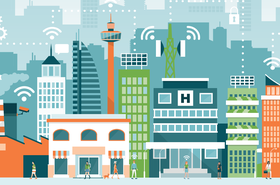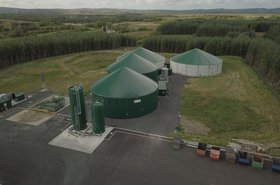We recently published the results of a major two-part survey revealing changing workplace sentiment over the course of the most disruptive time period in our modern history. Perhaps unsurprisingly, the survey captured what many now believe is an irreversible shift in how and where we spend our working and leisure time. However, and a mild spoiler alert here – the office is certainly not dead, nor do we believe retail will disappear entirely from our high streets – just that urban spaces will flex and evolve with changing business and consumer habits.
We know that our city centers are continually shaped by societal trends, and this creates opportunities for transformation. For example, the space race in Edinburgh has seen a scramble to convert existing buildings to create extra hotel capacity to meet the insatiable global demand for tourist accommodation. The demise of household retail names is seen as the inevitable consequence of changing shopping habits and the advantageous cost base of pure-play rivals, but this also creates change of use opportunities, in the same way that blended home and office working may also release capacity.
These changes bring exciting possibilities, and just as my healthcare colleagues are eyeing up the implications for greater decentralization of healthcare facilities, in hitherto unavailable city and town center locations, the data center and telecoms sector could also be the beneficiaries of this prime spatial capacity.
Our absolute societal dependence on data is now unquestionable and it is our digital connectivity that has enabled life to continue during the pandemic. The demand for data - already constantly outstripping supply pre-pandemic, has been exacerbated over the last nine months. We need more data capacity, yet major data center infrastructure can take years to come on stream. Perhaps a solution can be found in adapting and reconfiguring our existing buildings, that may now be ripe for transformation.
Before we get carried away, thinking that at a stroke we may have solved the conundrum of vacant space in our city centers and badly needed data capacity in one swoop, we need to address the elephant in the room – and it’s power! data centers require a lot of the stuff and cities don’t have a vast surplus supply of energy to power hyperscale development, without the lights going out. We could invest in upgrading power supplies to our cities at great expense, or take a more decentralized approach – like my healthcare colleagues.
We’re looking at the efficacy of distributed data center networks in our major conurbations, but crucially basing our key calculations on power consumption and not capacity. If a typical office consumes circa 25 to 40Watts per square meter, then a data center at 2kW/ sq m is up to fifty times more energy dependent and that’s without adding cooling at circa 600W to 1000W per square meter. It’s clear that you simply cannot re-task an office building into a data center without creating major energy supply issues for our cities. However, on the other side of that calculation is the impact of potentially lower occupation densities in offices, thus reducing typical power consumption and potentially freeing up a significant energy surplus to redeploy.
Smaller data center units
One pragmatic approach could be the creation of smaller standardized data centers – potentially up to 200kW in size linked via a distributed network. These could occupy a single floor of a retail unit or office block, with waste heat recirculated to drive down the entire building’s running costs. Bringing capacity online could be achieved far quicker through the use of modularization and crucially this infrastructure directly supports the role out of 5G networks that require small localized nodes.
Establishing data centers in the heart of our cities provides an additional complementary level to Hyperscale and larger Edge facilities, opening up the possibilities for an increasing blend of services in our urban centers, whilst addressing capacity and vacancy challenges. As we reimagine our future cities, I can see a compelling case for the greater adoption of distributed networks supporting a more diverse and robust city center offering.





